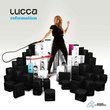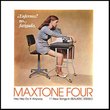| All Artists: The American String Project Title: Bartok: Schubert String Quartet No.1; Schubert: Death and the Maiden - Live 2007 Members Wishing: 0 Total Copies: 0 Label: MSR Classics Original Release Date: 1/1/2008 Re-Release Date: 2/5/2008 Genre: Classical Styles: Chamber Music, Historical Periods, Classical (c.1770-1830) Number of Discs: 1 SwapaCD Credits: 1 UPC: 681585126929 |
Search - The American String Project :: Bartok: Schubert String Quartet No.1; Schubert: Death and the Maiden - Live 2007
 | The American String Project Bartok: Schubert String Quartet No.1; Schubert: Death and the Maiden - Live 2007 Genre: Classical
If you are familiar with the solo and chamber music literature of the double bass, well... you must be a double bassist. Only bassists or fans of the instrument know the works of Dittersdorf, Dragonetti and Bottesini. Most... more » |
Larger Image |
CD Details
Synopsis
Product Description
If you are familiar with the solo and chamber music literature of the double bass, well... you must be a double bassist. Only bassists or fans of the instrument know the works of Dittersdorf, Dragonetti and Bottesini. Most music for the bass was written by bass players themselves to give them something to play and to help develop their own personal technique. There are no works for solo bass by Mozart, Bach or Beethoven. It s only slightly better in the realm of chamber music, with some offerings by Beethoven, Rossini, Stravinsky and, most notably, Schubert. The fact is that the best music written for the double bass is the bass parts of orchestral works. When I began my tenure at the University of Washington and created the series Barry Lieberman and Friends; I started to explore the effects of adding the bass to string quartets and quintets. While somewhat satisfying for me, the overall performance was too heavily weighted in the bottom voices. I realized that the only way to include the bass in the vast chamber literature would be to multiply the number of players to balance the upper, middle and lower voices. That balance, in terms of the Project, created an orchestra - from the bottom up - comprising one bass, two cellos, three violas, four second violins and five first violins. A chance meeting at my local off-leash dog park with the man who would become our first board president (Dr. Alan Morgan) was the impetus for making the Project a reality. As we walked with our dogs, I sketched the idea of a unique conductorless; string orchestra made up of many of my friends from all over the world, each one a great performer. We would bring them to Seattle for one week and perform great chamber works in the newly built Illsley Ball Nordstrom Recital Hall in Benaroya Hall. Thinking that this was just pleasant talk about an impossible dream, I was amazed to receive an email from Alan late that evening, complete with a detailed budget for my crazy idea. We gathered our Seattle friends, proposed the idea of the Project, and asked for volunteers to create the board. Everyone there agreed to participate and the Project was born. Our first meeting was held on September 11, 2001 - a momentous day for everyone in the world. Next was my great joy in inviting players to come and choosing the repertoire for our first season. That season s concerts, in May 2002, featured works by Shostakovich, Ravel, Haydn, Mendelssohn and others - nine works in all - and prepared in one week. Our players included concertmasters from several major orchestras, professors, and professional chamber musicians, and reviews were universally exceptional. Since that first season, the Project has performed more than 60 string quartet and quintet arrangements. When trying to describe the Project to someone, our dilemma is whether to talk about it as a chamber music ensemble or an orchestra because it is both, and neither. One thing about which all who perform with the Project agree: it is the most fun a musician can have. We are never quite sure what the best part is the music, the other musicians, the city, or just the joy of playing. My favorite observation about the Project is from Gramophone magazine: While in action the players must have been in string quartet heaven.

 Track Listings (7) - Disc #1
Track Listings (7) - Disc #1

